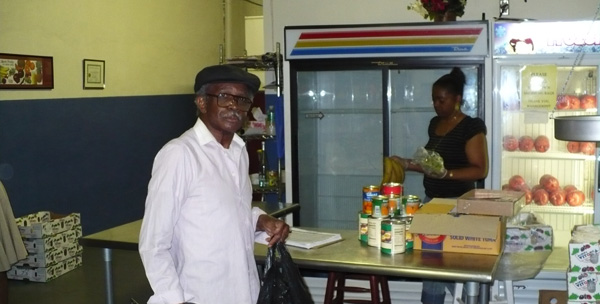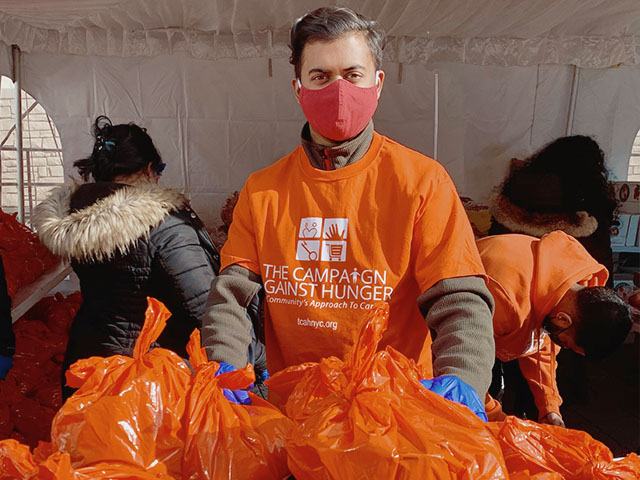Philanthropy Has Seen Better Days
Source: Business Week article by Tatyana Gershkovich –
U.S. charity has stumbled along with the economy. From food pantries on up, contributions have diminished, just when they’re needed most
It’s called a food pantry, but a scarcity of goods is taking over the shelves. Despite the efforts of the nonprofit BedStuy Campaign Against Hunger, which runs the Brooklyn (N.Y.) pantry, there’s no pasta, milk, or orange juice, and almost no meat. A few sacks of yellow onions represent the only produce, and a dozen or so packages of ham in a refrigerated cooler will be gone within hours, says program coordinator Tamara Dawson. The money ran out last winter, so there’s no shopping to be done either.
In March, the pantry fed 5,500 people. By April, that number grew to 7,500. Some 800 others have been turned away in recent months. “I have people coming up to me asking me: ‘What happened here?'” says the Reverend Melony Samuels, the project’s executive director. This nonprofit, like so many others that serve social needs, is caught in the grip of a classic economic squeeze: As the economy continues to sour, the demands on social service organizations have increased at the very time that its supply of funding from donors is dropping.
Falling Way Short
Consumers are confronting higher prices for utilities, gas, and groceries, which in turn boosts demand—at the same time resources are scant. Meanwhile, the national ranks of the jobless are growing, with the U.S. unemployment rate jumping from 5% to 5.5% in May alone. The food pantry’s grocery funds are depleted, and the project’s effort to raise money through word of mouth, letters, and flyers hasn’t yielded much of a response from the community, says Samuels. The monthly cost to provide food for all who come to the BedStuy pantry is $38,000, but in recent months the nonprofit has fallen short of that mark by approximately $10,000, according to Samuels. Carlos Rodriguez, vice-president for the Food Bank for New York City, an umbrella organization that helps supply the BedStuy Campaign, says food donations are likely to fall 53% this fiscal year. Its fund-raising has not kept pace with the increased demand for help.
Nationwide, organizations that help the disadvantaged with basic food and shelter are facing larger demands. The Salvation Army has seen many new faces—often people who were once labeled “middle class”—seeking help in Colorado, Florida, Oklahoma, Ohio, and other states. Calls for Salvation Army assistance with shelter in Arizona have increased by 60%, and food requests in Southern California are up by 50%.
“Our Christmas fund-raising held strong, but after the New Year we started seeing things start to unravel,” says Major George Hood, a Salvation Army spokesman. He added that even the economic turbulence following September 11 didn’t precipitate such a tremendous decline in donations: “It has been a long time since things have been this bad. I haven’t seen these kinds of declines in the past eight years.”
Depending on Individuals
The pain is likely to be visited first, and most harshly, on organizations that provide direct human service—food and shelter, says Richard Marker, a philanthropy adviser and New York University professor. Such nonprofits depend on individual donors and have virtually no corporate support, according to Marker. As a result, they’re affected as soon as people begin feeling financially insecure.
As individual donors say they’re no longer able to give, nonprofits are forced to turn even more toward securing the largesse of Corporate America. Only one hitch: Many U.S. companies are also hurting financially these days, pinched by soaring commodity costs, a globally skittish credit market, and uneasy customers. “As we continue to see the economy suffer, we can’t say that our giving will continue to go consistently up,” says Kimberly Davis, president of the JPMorgan Chase Foundation (JPM), which donated $110 million in 2007. Investment bank Credit Suisse (CS) is a major donor to the Food Bank for New York City, and plans to match the $6.7 million it gave in 2007, despite losing $2.1 billion in the first quarter of 2008, says Eric Eckholdt, the executive director of Credit Suisse Americas Foundation. “We will take into consideration the rising demand challenging the food nonprofits when support for Food Bank and other similar organizations are reviewed this year,” Eckholdt said.
Dwindling Profits and Contributions
Corporate giving is often based on the company’s financial success the previous fiscal year. In 2007, corporate foundations increased their giving by 7%, and donated approximately $4.4 billion, according to the Foundation Center, a New York philanthropic research organization. Donors are expected to honor pledges they made the previous year, but the economic climate of 2008 will likely make gifts planned for 2009 more modest, philanthropy experts say. Carolyn Cavicchio, a researcher at the Conference Board, a business membership and research group, says: “Companies strive for a mutually beneficial relationship with nonprofits,” and that means small, grassroots groups may be pinched most on corporate giving. Smaller nonprofits often find it difficult to provide what a company needs: recognition, transparency, and a method to engage its employees with charity work.
Still other companies are looking beyond cash as a way to supplement their giving. This year, besides donating $20 million, United Technologies (UTX) is launching a philanthropic program to encourage employees to volunteer and provide their expertise to nonprofits. Utility bills have become an overwhelming expense for some of the company’s charities, says Andrea Doane, United Technologies’ director of community affairs and corporate giving. As a result, the manufacturer assembled a team of experts to help these organizations cuts energy costs. “This is absolutely not a substitution of funds,” Doane says of the effort. “We just like to say: ‘How can we do more with less?’ and we’re lending [nonprofits] that sort of thinking.”
Big Givers
Full data for 2007 are not yet available, but in 2006 total nongovernment philanthropic donations surpassed $295 billion, a 4.2% increase from the previous year, according to the Giving USA Foundation, a philanthropy consulting nonprofit in Glenview, Ill. The U.S. has nearly 1.5 million nonprofits, and while most donations (75.6%) are from individuals, the reverberations from Wall Street’s challenging year will directly affect nonprofits. “We haven’t seen any real effects yet, but philanthropic giving is usually a lagging indicator,” says Mary Kay Leonard, group vice-president for investor relations at United Way of America. “We’re anticipating less giving in the coming year. Corporate giving will be totally dependent on how individual companies are doing.”
American Express (AXP) budgets about $32 million yearly for philanthropy, and it anticipates little change in that amount, despite an uncertain business outlook. “When there are tough economic times, you have to focus on what’s important to you as a company,” says Timothy McClimon, president of the company’s foundation. General Electric (GE), which matches employees’ donations, says its workers’ giving rose 5% in the first quarter of 2008, to around $12 million. “Things are tightening a bit in the second quarter, but we haven’t seen employees back off on what they give,” says Bob Corcoran, president of GE’s philanthropic foundation. Last year the conglomerate’s total philanthropy was about $160 million; GE plans to give slightly more in 2008, Corcoran says.
Such funds aren’t likely to trickle into the sparse BedStuy pantry, where some clients “come in wearing their suits right after they get off work in the city,” says Dawson. Tougher times, she says, will probably produce even more people who need help feeding their families.
Tatyana Gershkovich is an intern at BusinessWeek.com.





